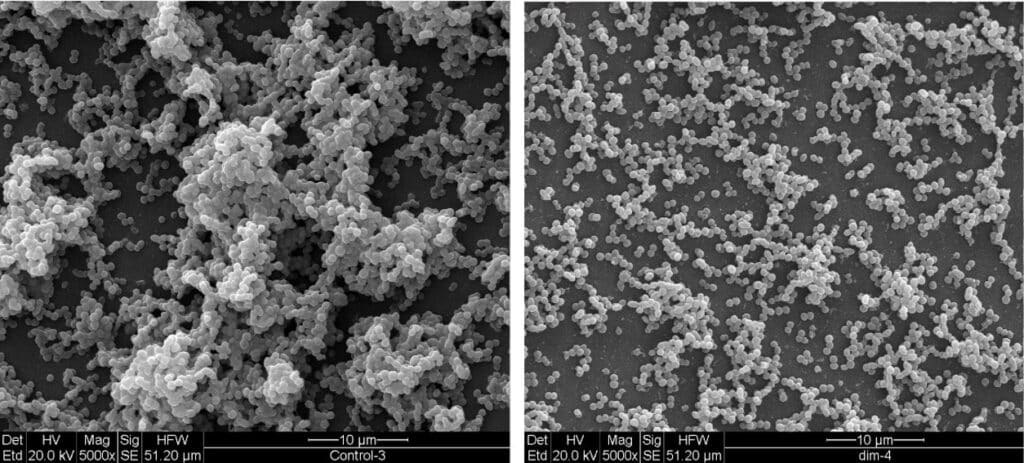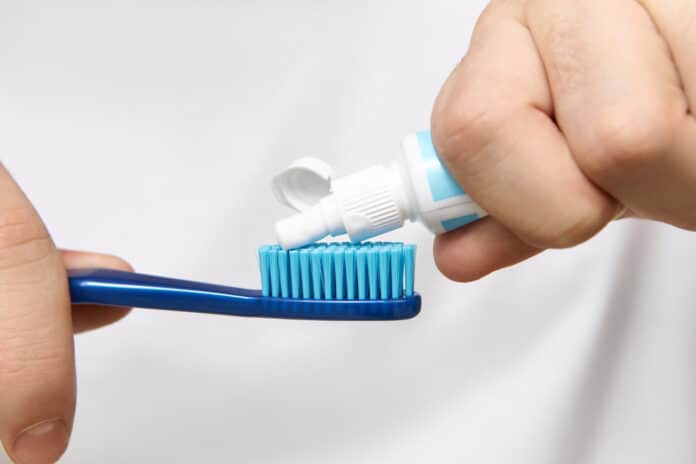Oral microbial biofilms are known to contribute to infectious diseases and are a significant public health concern. Oral biofilms are complex three-dimensional structures that develop from a conditioning saliva-derived film, also known as a pellicle, forming on the surface of the teeth.
These early colonizers promote subsequent interactions with secondary colonizers that join the growing biofilm, creating a mature multispecies microbial community. One key bacterial component of these biofilms, Streptococcus mutans, is a principal etiological agent of dental caries. Dental caries is associated with the bacterial metabolism of carbohydrates, leading to prolonged plaque acidification and demineralization of the tooth enamel.
Researchers from Ben-Gurion University of the Negev, Sichuan University, and the National University of Singapore have found that the biofilms that cause plaque and cavities are reduced by 90% by the naturally occurring compound 3,3′-Diindolylmethane (DIM), commonly known as bisindole. Additionally, the molecule is discovered to have anti-carcinogenic properties.
The researchers discovered that bisindole (DIM) damaged the biofilm by 90%, preventing the bacterium from having a chance to develop. In this context, biofilm attenuation by DIM probably occurred due to a reduction in extracellular polymeric matrix (EPS) synthesis that resulted in less adhesion of cells to the surface.

Scientists noted, “This study demonstrates the possible use of DIM in mitigating pathogenic oral biofilms and chronic dental caries. It is important to note that DIM also has been classified as an anti-cancer agent involved in eradicating various solid malignancies without imposing toxicity to normal cells. Therefore, these reports of its low toxicity hold an important advantage in therapeutics as its use in treatment entails minimal complications.”
Lead author Prof. Ariel Kushmaro of the Avram and Stella Goldstein-Goren Department of Biotechnology Engineering said, “The molecule, which was found to have low toxicity, could be added to toothpastes and mouthwashes to improve dental hygiene greatly.”
Journal Reference:
- Yifat Baruch, Karina Golberg, Qun Sun, et al. 3,3′-Diindolylmethane (DIM): A Potential Therapeutic Agent against Cariogenic Streptococcus mutans Biofilm. Antibiotics. DOI: 10.3390/antibiotics12061017
